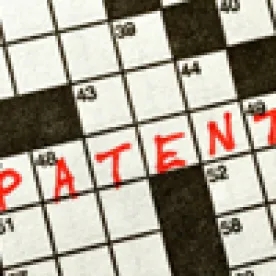In its Decision, the Board instituted covered business method patent review for prior art challenges, but denied institution of challenges brought under 35 U.S.C. §§ 101 and 112. The ‘464 patent “relates to identifying a work, such as a digital audio or video file, without the need to modify the work,” which “can be accomplished through the extraction of features from or about the work, and comparison of those extracted features with records of a database or library.”
The Board first addressed standing to seek covered business method patent review. The Board was persuaded “at least one claim claims a method that calls for an action to be performed related to an advertisement, namely claim 10,” which is directed to advertising, “a fundamental business practice.” See Hulu, LLC v. Intertainer, Inc., CBM2014-00052, slip op. at 10 (PTAB Jun. 23, 2014) (Paper 10). The Board was also persuaded “that the ‘464 Patent is not for a technological invention because at least claim 1 does not satisfy the first prong of the test.” Claim 1 does not recite a novel or unobvious technological feature, but rather “recites a method that involves ‘receiving,’ ‘correlating,’ ‘storing,’ and ‘generating,’ among other steps, which are all known processes that are generally performed by computers during the relevant time period, i.e., at the time of filing the ’464 Patent.” Thus, the Board was persuaded that the ‘464 patent is eligible for covered business method patent review.
The Board then addressed section 101 subject matter eligibility. Petitioner argued “that the claims of the ‘464 Patent are directed merely to an abstract idea of ‘linking a media work to a business action’” and that the alleged abstract idea “has been performed manually for decades.” Petitioner also argues “that the claims add only conventional computer technology or descriptions of types of data to the abstract idea.” The Board was not persuaded, stating that “[a]lthough there may be analogies between the processes, the claimed process requires more than mere human recognition.” The claims “require that the electronic media work be identified, through particular types of searching processes, to a certain degree, which is different than [merely] linking an advertisement to its listing on a reader service card.” As such, the Board was not persuaded that the challenged claims are more likely than not patent ineligible under 35 U.S.C § 101.
The Board next addressed the prior art challenges under 35 U.S.C. § 103. The Board granted institution of covered business method review of the digital identification patent after being persuaded by Petitioner that the challenged claims are more likely than not rendered obvious by the prior art combinations.
The Board lastly addressed Petitioner’s challenges to certain claims under 35 U.S.C. § 112, 2nd paragraph (definiteness) and 1st paragraph (written description). Both grounds “relate to the same claim limitations, namely ‘the associated tag.’” Petitioner argued that although the ‘464 patent “defines the verb ‘tagging,’ it fails to define the noun ‘tag,’ such that the definition of the verb results in three possibilities for the claim term ‘tag.’” The Board, however, agreed with Patent Owner that Petitioner applied an incorrect legal standard and “Petitioner ‘points to no evidence showing that skilled artisans would find the element [‘tag’] as lacking reasonable certainty in its scope’ or that the phrase ‘providing, from the computer system to a user electronic device the first electronic media work and the associated tag’ is indefinite.” Moreover, the “fact that the term ‘tag’ may [be] broad in meaning does not necessarily imply that it is indefinite.” Similarly, the Board agreed with Patent Owner that the claim term “tag” has adequate written description support, evidenced by examples of “tags” disclosed in the specification.
Thus, the Board instituted covered business method patent review under 35 U.S.C § 103, but not under §§ 101 or 112.
Google Inc. v. Network-1 Techs., Inc., CBM2015-00113
Paper 7: Decision on Institution of Covered Business Method Patent Review
Dated: October 19, 2015
Patent: 8,904,464 B1
Before: Kevin F. Turner, Lynne E. Pettigrew, and Jon B. Tornquist
Written by: Turner
Related proceedings: Network-1 Technologies, Inc. v. Google Inc. and YouTube, LLC, Case No. 14-09558 (S.D.N.Y.); IPR2015-00343; IPR2015-00345; IPR2015-00347; and IPR2015-00348.



 />i
/>i

